|
All it took was a 15-degree drop in temperature and a cool breeze for me to start thinking about making a batch of soup and pumpkin muffins. The temporary change in weather also motivated me to open a bottle of red wine. Having tasted a lot of lightweight wines the past few months, I was “jonesing” for some Chianti. Chianti Classico appellation is located in Tuscany, Italy situated between Florence and Siena and is the most esteemed and ancient area in the Chianti winemaking zone. Chianti Classico is a small wine region that produces DOCG wines with very specific rules. The blend must be at least 80% Sangiovese grapes. Chianti Classico Riserva is made with the best Sangiovese grapes and requires a minimum of 24 months maturation, including 3 months of bottle aging. Every bottle of Chianti Classico has a pink label with the Black Rooster seal, authenticating the wine. The label is a symbol of the Chianti Classico Wine Consortium. The bottle must also bear the DOCG label (Denominazione di Origine Controllata e Garantita), which under Italian wine law is the highest designation of quality among Italian wines. Tomaiolo Chianti Classico Riserva 2012 DOCG is a blend of 90% Sangiovese and 10% Cabernet Sauvignon. The wine is aged in oak casks for 24 months and one year in the bottle. The color is deep ruby with aromas of cherry, blackberries, spice, violet and oak. The palate offers dark cherry, dark fruit, cranberry, toast and a long finish of cherry and cocoa. This is a full-bodied, dry wine with soft tannins. Pair with grilled meats, pasta and red sauce, and seared tuna. SRP: $12.99 Alcohol: 13% I never did make the soup or pumpkin muffins, but there’s always next week!
Until next time… Cheers! Penina To leave a comment or if you have an inquiry, please contact me at [email protected] Every now and then I get a craving for Sangiovese wine. And the other evening, that craving struck like a bolt of lightning. Lucky for me, I had a bottle of Sangiovese di Toscana IGT 2009 Podere Scopetone tucked away in my “wine cellar”. Sangiovese grapes are the most widely planted varietal in Italy. The skin of the Sangiovese grape is thick and the wines tend to be more savory than sweet. Depending on where the grapes are grown, climate and soil being a factor, Sangiovese can deliver a wine that is fruit forward with bright acidity and high tannins or lean towards earthy with herbal notes. It runs the gamut of descriptions, but one of Sangiovese’s trademarks is its cherry flavors. Podere Scopetone winery is located in Scarnacuoia, just below the town of Montalcino overlooking Montosoli. The winery location is noted for being where Ferruccio Biondi Santi first planted Sangiovese grapes in the 1870s. Podere Scopetone began its foray into winemaking in 1978, when Federico Abbarchi, a Milanese pilot, planted vineyards. The first bottled wines were produced in the 1980s. When Federico died in 2007, Loredana Tanganelli (a passionate beekeeper) and her husband Antonio Brandi (a viticulturist) became partners with Federico’s widow, Angela Abbarchi. Soon after, the couple became the owners of the winery. Together with their own vineyards and later expansion, the couple produced their first vintage of Brunello in 2009. Podere Scopetone is organic with a sustainable farming practice. In addition to the grapes, it is important to keep the bees safe! A new cellar was completed in 2015 and they are in the process of becoming certified organic. Luca Felicioni, agronomist and Maurizio Castelli, oenologist are part of the winemaking team. Photos courtesy of Podere Scopetone Sangiovese di Toscana IGT 2009 Podere Scopetone is 100% Sangiovese Grosso made from the vineyards in Montecucco. The color is ruby red with delicate aromas of cherry, red berries, floral and hints of leather. The palate offers cherry, plum, strawberry, spice, peppery tones and a trace of vanilla. This is a lively, dry, medium-bodied wine with medium tannins. Alcohol: 14% SRP: $15.99 This is a food friendly wine and will pair well with a multitude of dishes. I served it with baked salmon, roasted potatoes and beans. Quite yummy! Until next time!
Cheers! Penina To leave a comment or if you have an inquiry, please contact me at [email protected] The other day I had the opportunity to attend a seminar and walk around tasting of many impressive Brunello wines from the Consortium of The Brunello of Montalcino Wine. Although the emphasis was on the 2013 vintage, I also sampled wines dating from 2010 through 2015. The consortium was founded in 1967 and started with a membership of 20 producers. Today there are more than 200 members of which 31 estates were represented at this event. Montalcino is located in the Tuscany wine region of Italy. Montalcino is a small wine region with 3500 acres of vineyards and roughly 250 wineries producing Brunello di Montalcino. Brunello di Montalcino was awarded the first ever DOCG designation in 1980 and is considered one of Italy’s most famous and distinguished wines. DOCG stands for Denomination of Controlled and Guaranteed Origin and it is the highest designation given under Italian wine law. 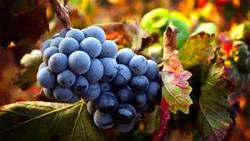 Brunello di Montalcino wine is made exclusively with 100% Sangiovese grapes (named ‘Brunello’ in Montalcino). The skin of the Sangiovese grape is thick and tends to deliver a wine that is fruit forward with bright acidity and high tannins. Of course climate, soil and production play a big part in the wine’s outcome. The village of Montalcino sits high up on a hill with the vineyards sloping downward into the valley. The climate in Montalcino is warm and dry, typical Mediterranean weather. Vineyards are planted up to 500 meters in elevation with north facing slopes experiencing a cooler microclimate and more winds, while the southern and western facing slopes are exposed to extreme sunlight and maritime breezes. The vines are planted in a variety of soils such as limestone, clay, schist, volcanic soil and galestro, all of which contribute to the difference in quality, complexity and character of the wine. DOCG Regulations require that Brunello di Montalcino age for 2 years in oak casks, 4 months in bottle (6 months for the Riserva) and bottling must take place in the production area. Brunello di Montalcino must be aged for a minimum of 5 years (6 years for Riserva) prior to release for sale. Most of the 2013 vintages I tasted were quite approachable and gentler than the more aggressive and bold Brunello I’ve had in the past. My palate was treated to a gamut of flavors such as dark berries, cherry, aromatic wood, anise, leather and spice. “Lush fruit, round tannins, quite aromatic, good structure and high acidity” seemed to be the theme for most of the 2013s with variations according to soil and plot locations. Brunello wines are impressive and I look forward to trying the 2013 vintage again in about five years!
Montalcino wines also include Rosso di Montalcino DOC, Moscadello di Montalcino DOC and Sant’Antimo DOC. I will be exploring these wines in another post. If you like collecting wines, do yourself a favor and pick a bottle or two of Brunello and tuck them away to enjoy at a future date. The aging potential of these wines is 8 to 25 years. Cheers! Penina To leave a comment or if you have an inquiry, please contact me at [email protected] 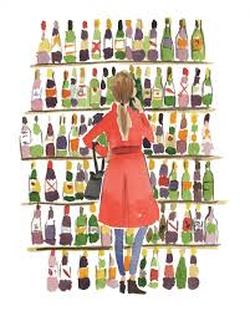 Whenever I see a wine store, I like to go in and peruse the shelves. It is a fun way for me to discover and learn about lesser-known wines. On this particular day, I was looking to see what the store had to offer for under $15. When I reached the Italian section, I saw a bottle of Ninety+ Cellars Chianti Riserva selling for $11.99. I must admit that I was not familiar with the label, but I was intrigued by the accolades that the wine store owner was giving it. So, I decided to purchase a bottle and see for myself. First of all, Ninety+ Cellars is a wine brand based in Boston, MA. Founded by Kevin Mehra in 2009 and with Wine Director Brett Vankoski at the helm, their concept is to buy a percentage of a winery’s production for a reduced price, bottle it in Ninety+ Cellars bottles and sell the wine for less. The website states, “We are a modern day wine négociant–working with highly rated wineries and vineyards to curate a portfolio of fine wines from all over the globe”. Every wine bottle is given a lot number and has the 90+ stamp of approval. Their wine portfolio includes Napa Valley, New Zealand, Italy, and France. Wines range in price from $10 to $40. 90+ Cellars Classic Series Chianti Riserva 2013 Lot 144 Sangiovese grapes are sourced from the Chianti region of Tuscany. The wine spends three years of maturation before release and therefore is given the Chianti DOCG Riserva label. The color is ruby with aromas of cherry, spice and floral notes. The palate offers red fruit, spice, with hints of white pepper and oregano on the finish. Mild tannins, beautifully balanced and impressive for the price. Alcohol: 13% SRP: $11.99 It’s hard for me to pass up a wine store, bookstore or knitting shop!
Have a great weekend! Cheers! Penina To leave a comment or if you have an inquiry, please contact me at [email protected] There are many eye catching and whimsical wine labels that make one want to reach for the bottle regardless of style or origin of wine. I must admit that I have on very rare occasions bought a bottle just for the label! What can I say about these particular labels and wines? A lot! When I opened the shipping box delivered to me by the importers, I immediately thought that this was going to be a fun review! 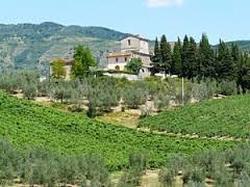 Paolo Masi, who is a third-generation winemaker at Renzo Masi winery, makes both of these wines. Fattoria di Basciano is the estate owned by the Masi family since the start of the 1900s. Located in the south of Florence, in Tuscany’s Rufina district, the estate sits on a hill overlooking the Argomenna Valley on one side and the right bank of the Sieve river on the other. The Renzo Masi winery produces a broad spectrum of wines from entry-level to fine and is considered one of the best areas for Sangiovese grapes after the “Classico” region. Renzo Masi’s motto is “Big enough to be broad-minded. Small enough to care about the details”. Affectionately called “Rubio and “Blanca”, Il Bastardo Sangiovese di Toscana IGT 2015 and La Bastarda Pinot Grigio di Siciliana 2015 tell their own story the minute the wine is opened. La Bastarda is 100% Pinot Grigio from Sicily. Grapes are picked before they lose their natural acidity and become too sweet. The color is a soft golden yellow with fruity aromas including citrus and honey. The palate is crisp with inviting notes of mild citrus, pear and apple. This is not your typical Pinot Grigio, exhibiting more character and structure than most I’ve tasted. One can only imagine what “Blanca” must be thinking as she poses with not a care in the world while sipping wine! Alcohol: 12.5% Price: About $9 Il Bastardo is 100% Sangiovese mostly picked from Tuscany’s Rufina district. The color is dark ruby with hints of purple. The nose offers dark berry and ripe cherry that segue onto the palate. Fennel, a hint of pepper and soft to medium tannins give this medium-bodied wine a smooth finish. So where is “Rubio” going on his motorbike? Is he off to find “Blanca” or is he running away with this delicious wine? Alcohol: 13% Price: About $9 Both wines are well priced and sold throughout the US. And in addition to being a conversation piece, the wines will complement a variety of dishes. Have some fun and enjoy the adventures of “Rubio” and “Blanca”!
Cheers! Penina 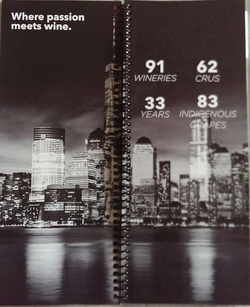 On Monday I went to the Vias Imports Grand Portfolio Tasting held at the IAC building in NYC. It was a beautiful venue to hold a wine tasting. Vias Imports has one of the most comprehensive portfolios of Italian wine in the US. In addition to Italy, their portfolio includes wines from Argentina, Austria, France, Lebanon, Spain, and the United States. With over 200 indigenous varietals that express Italy’s unique and diverse regions, there were many wines to taste, including several other countries. It was an afternoon of learning a little history and tasting a few varietals for the first time. One of the varietals that were new for me was the Barbarossa grape. I learned that some of the oldest Barbarossa vines in Italy are located in the Emilia-Romagna region. Fattoria Paradiso owns a hundred-year-old vineyard and produces this grape. I tasted the 2010 Il Dosso Barbarossa Forli, IGT made with 100% Barbarossa. It was fresh with cherry and hints of mint and chocolate. Another grape that was new to me was Dolcetto, found in the Piedmont region of Northwest Italy. I tasted a 2014 Vilot Dolcetto D’Alba from Ca Viola Vineyards. Made with 100% Dolcetto, it had lots of blackberry, licorice and a hint of almonds on the finish. 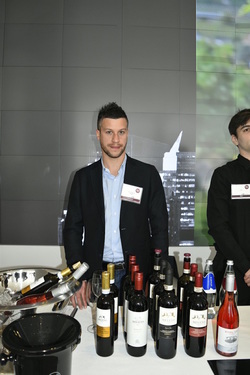 Matteo Menicacci Matteo Menicacci I met with Matteo Menicacci, winemaker and producer at Castello Di Meleto in Tuscany. He encouraged me to try the 2014 Vigna Casi Chianti Classico Riserva, DOCG. Made with 100% Sangiovese grape, it was smooth and elegant with floral and berries dancing on the palate. The vineyard is rich in history and it is worth visiting their website. http://www.castellomeleto.it I will revisit and share some of the many varietals that I tasted in future posts. But before I sign off, I must tell you about a heavenly wine from Le Salette, located in the Classica Valpolicella region. The 2012 La Marega Amarone Della Valpolicella Classico DOCG was exquisite. This Valpolicella blend was packed with spices, strawberry, herbs, chocolate and plum with a velvety finish. I would drink this for dessert!
Have a great Wednesday! Cheers! Penina  Oh my…it’s Friday and I’m finally sitting down to write a post. The days are going by so quickly and I can’t seem to get caught up with everything. However, an unexpected little snowstorm is keeping me inside this morning, so let me begin. 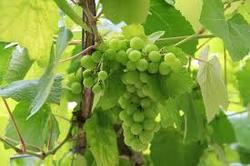 I met with a few friends midweek for tapas and a glass of Albariño wine. This green-skinned grape is grown in Galicia, located in northwest Spain. Albariño is the Galician name for this grape whereas in Portugal it is referred to as Alvarinho. Albariño wine is noted for its floral and soft fruity bouquet extending to the palate with common notes of peach and citrus. I found it to be light and quite complementary to the variety of tapas dishes. It is a lovely wine to keep in mind for the warmer months and also makes for a great aperitif. 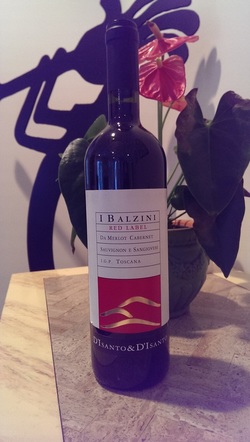 Last night I opened a bottle of 2009 D’Isanto & D’Isanto I Balzini Red Label to serve with a hearty homemade vegetable and bean soup. I reviewed this Tuscan wine about a year ago. Most of what I experienced back then, remained consistent. Made with Cabernet, Merlot and Sangiovese, the aromas were rich in dark fruit and spice. The palate offered black cherry, plum and earth as it did before. However, this time the finish was stronger, with spice and anise lingering for a longer finish. The wine opened up much faster as well. My guest will attest that it was good to the last drop! http://www.ibalzini.it/index.php/en The snow is beginning to taper off and I’m getting ready for the weekend and Super Bowl!
Happy Friday! Cheers! Penina 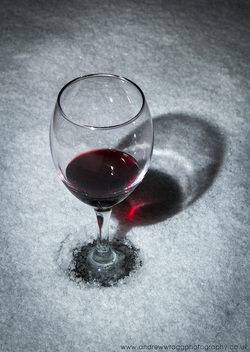 The snow has arrived along with howling winds. I have food, wine, books and movies to entertain me. Let’s hope all the power lines stay intact! Aside from work, writing and meeting friends for quick drinks these past few days, I’ve also been reorganizing my wines. It seems that I’m low on bottles under $20 again. I would love your thoughts and suggestions as to what you drink in the under $20 range. There are so many delicious wines in this price category. 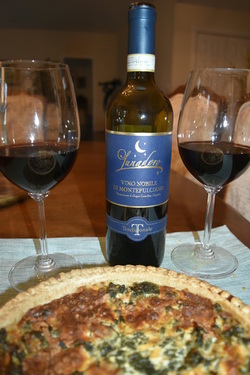 Realizing that I was probably going to be stranded inside for the better part of the weekend, my friend came over last night to shake things up a bit. We opened a bottle of 2010 Lunadoro Vino Nobile di Montepulciano D.O.C.G to have with my homemade spinach quiche. The wine carried us through to salad and pasta with shrimp in vodka sauce. And speaking of lower price points, (average bottle around $16) this Tuscan wine was impressive. Made with 100% Sangiovese grapes, it was the color of dark rubies. The nose had lovely notes of floral, berries, plum and fennel. The palate offered cherry, plum, licorice and a hint of spice. It was medium-bodied with soft tannins, giving rise to a long finish. http://www.lunadoro.com  NFL playoff games tomorrow! What will you be drinking and eating? Happy Saturday!
Cheers! Penina  It’s an overcast day, but I’m heading out for a power walk soon. I need to burn off a few calories from my dinner last night. 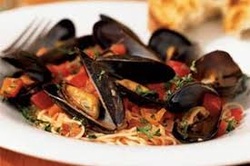 After watching the Patriots win the playoff game, (yippee!) I met up with a friend at a local Italian restaurant for some wine, mussels and pasta. It was a delicious meal, topped off by good conversation and many laughs. 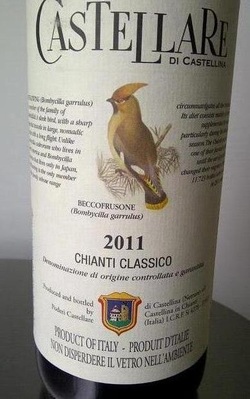 We drank 2011 Castellare Chianti Classico from Tuscany. Made with only native vines, 95% Sangioveto, and 5% Canaiolo, this medium bodied wine was ruby red in color with dark cherries, spices and herbs on the nose. The aromas carried through to the palate with red cherry, tobacco, pepper and a hint of floral for a very satisfying finish. http://www.castellare.it/eng/home.asp Have a peaceful Sunday!
Cheers! Penina  I’m happy to report that I stayed awake for the entire Golden Globes Awards on Sunday. Considering that I was sipping on wine during the evening, I fully expected to nod off. However, I was thoroughly entertained by Ricky Gervais and many of the presenters. 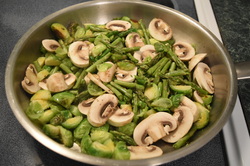 After watching lots of football during the day and prior to my friend arriving, I sautéed brussel sprouts, mushrooms and asparagus in garlic and olive oil. We baked a pizza and added the veggies on top. Quite yummy! 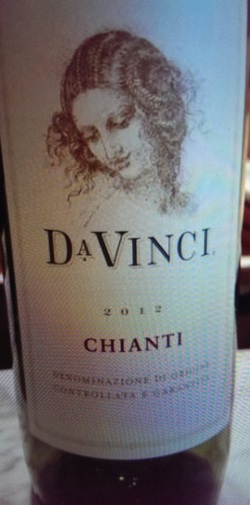 We drank 2012 Da Vinci Chianti from Tuscany while we ate pizza and watched the awards. This was smoother than most Chiantis I am used to drinking. It is made with 90% Sangiovese and 10% Merlot grapes. The color was vibrant red with aromas of cherry, plum and spice. The palate offered dark fruits (mainly cherry & blackberry) with pepper, herbs and earth. This medium-bodied wine had rounded tannins with a nice pepper and spice finish. The price is reasonable, ranging from $12 to $15. http://www.davinciwine.com I have a busy day ahead, but hope to get home before the snow begins!
Happy Tuesday! Cheers! Penina |
Categories
All
|

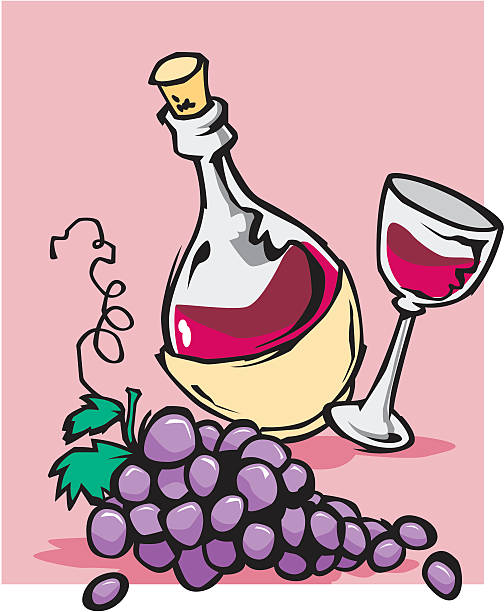
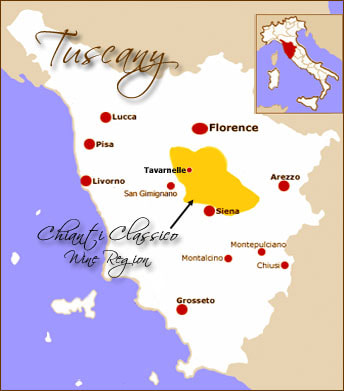
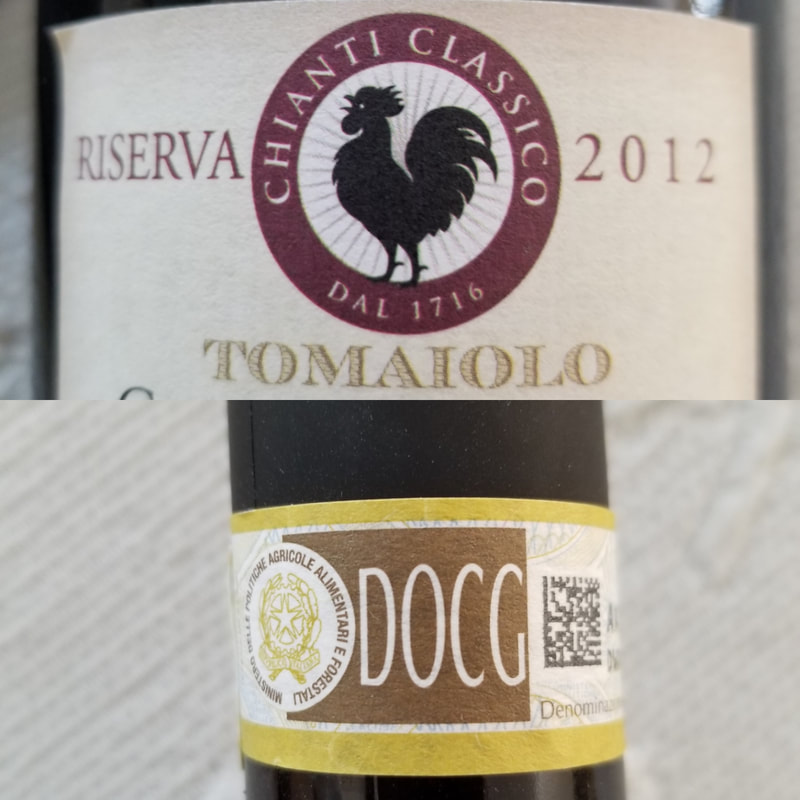
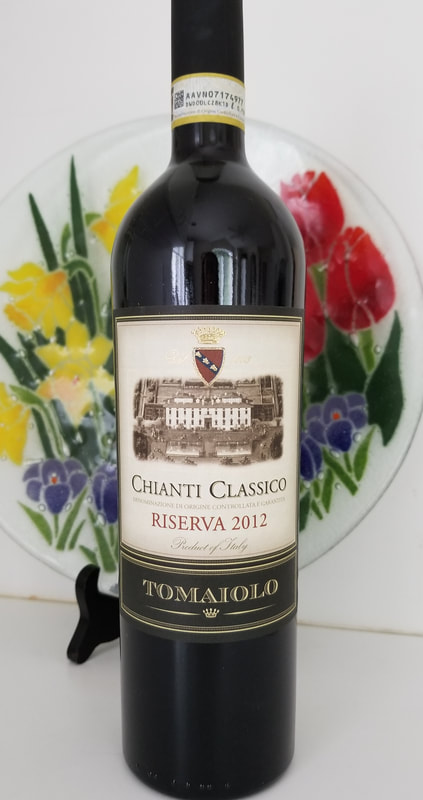
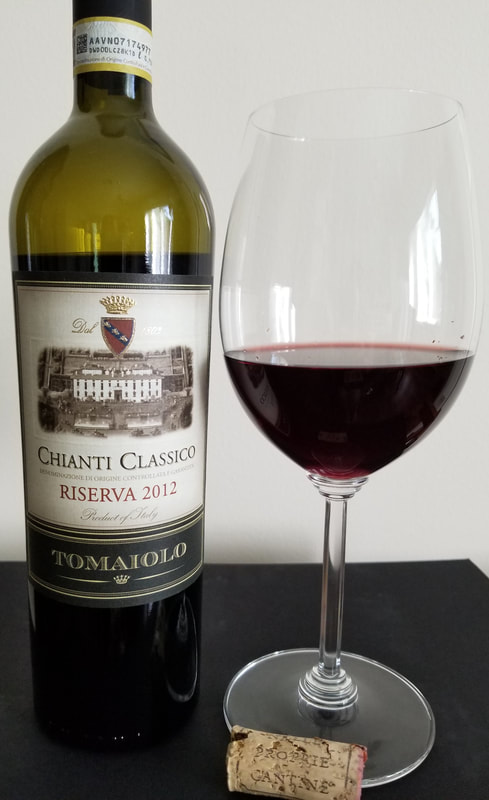
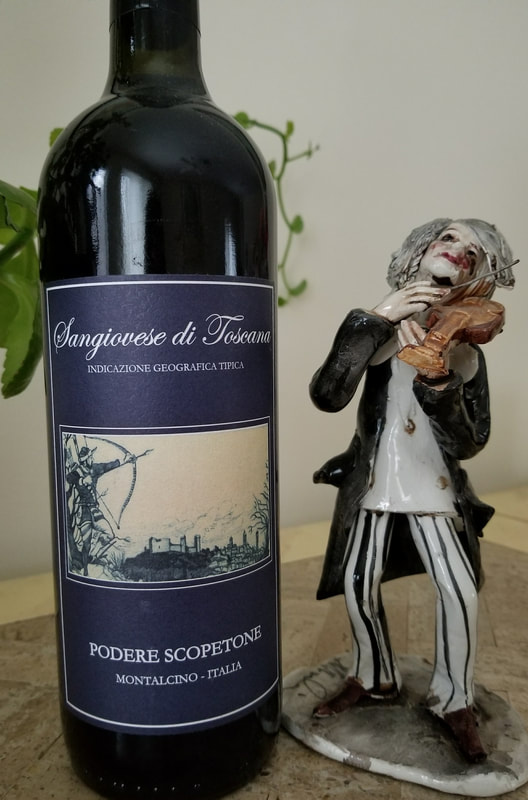
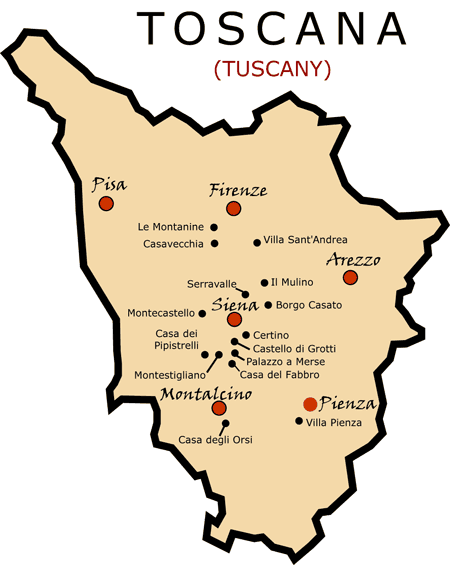
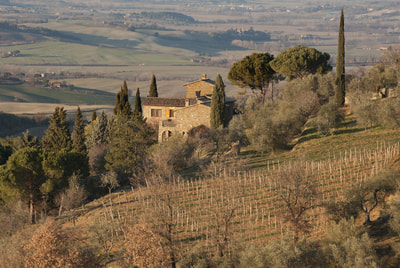
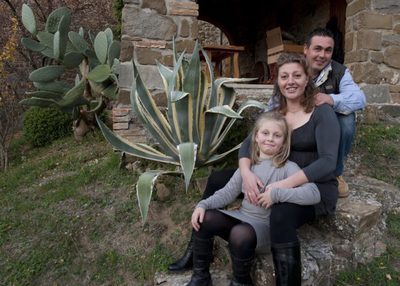
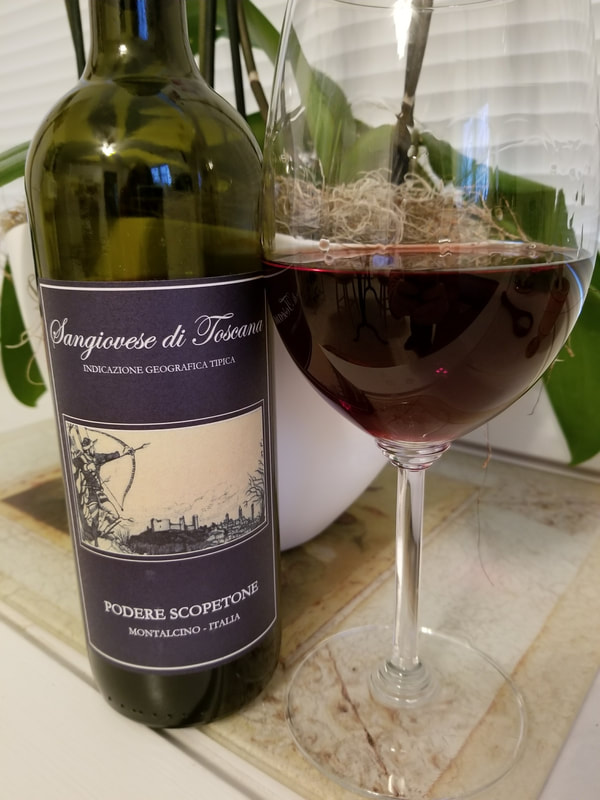
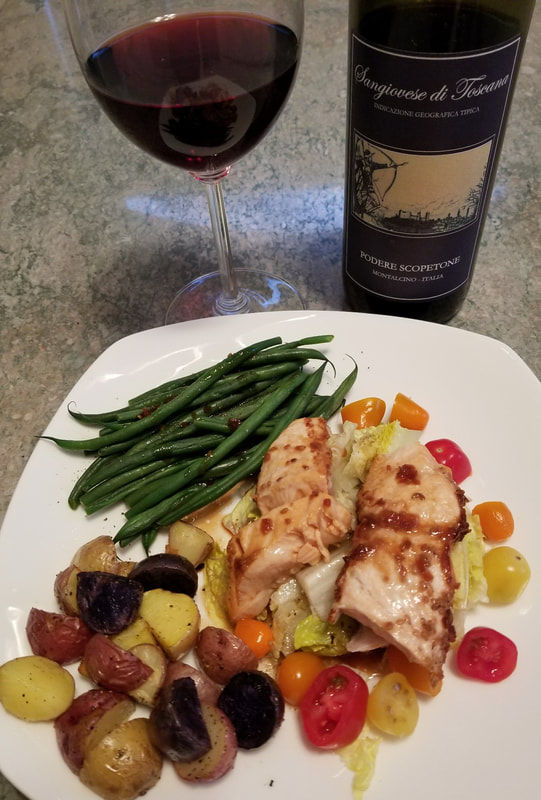
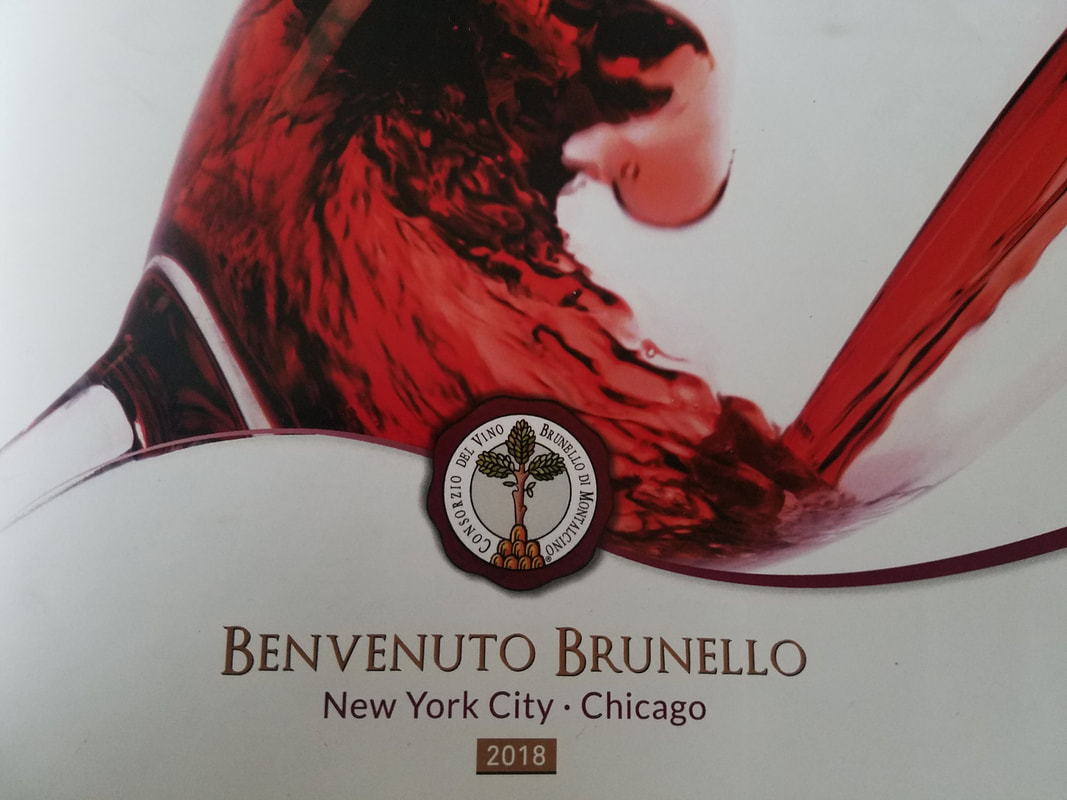
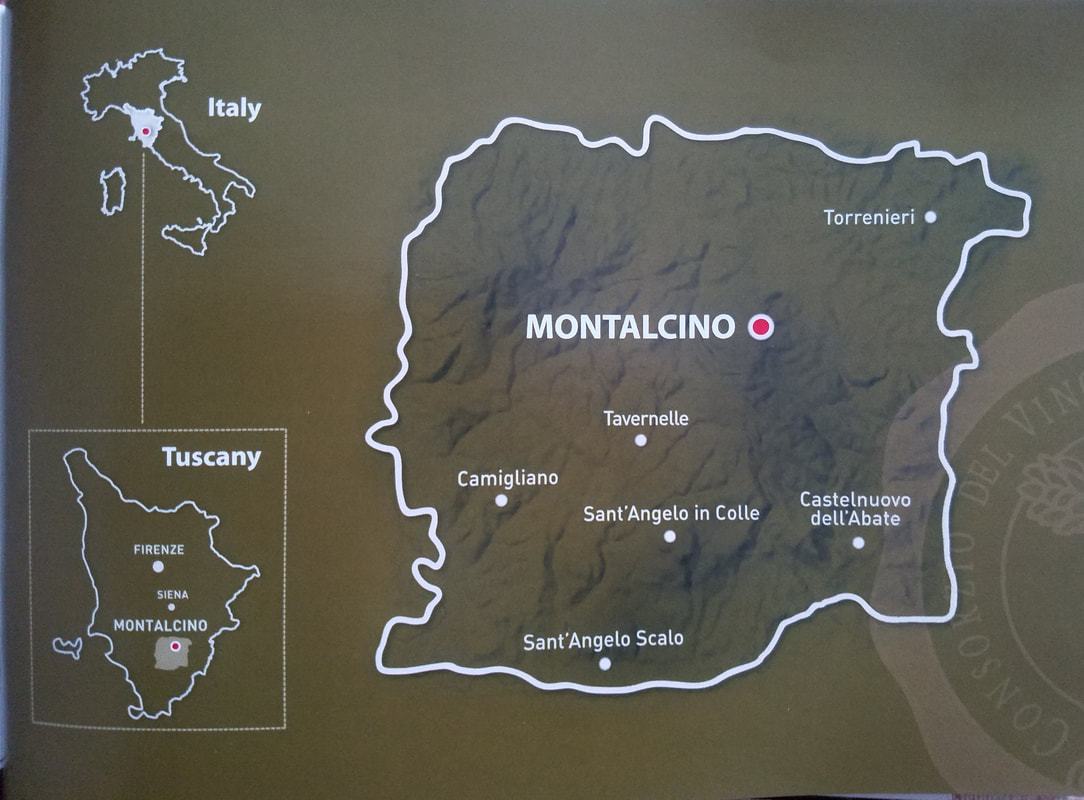
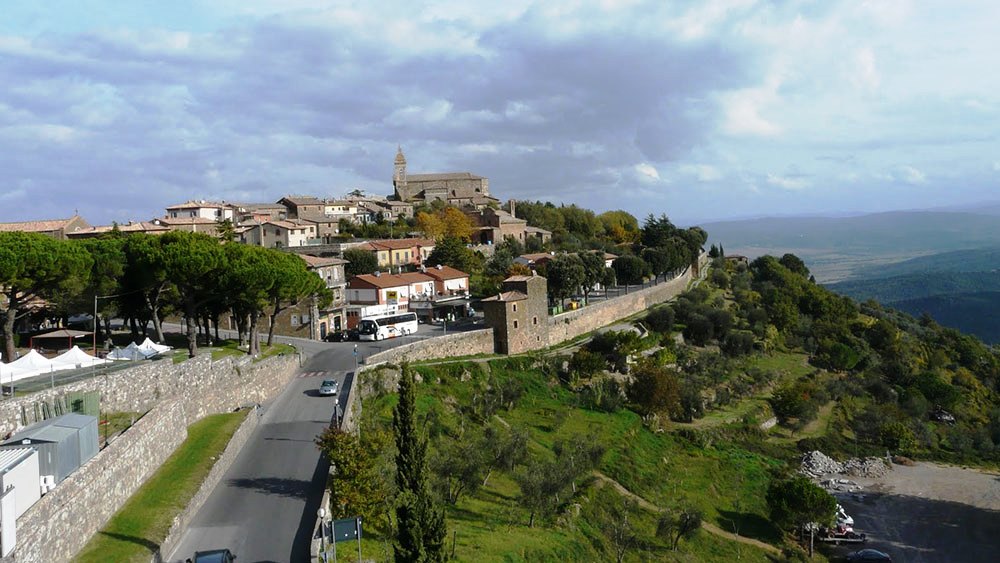
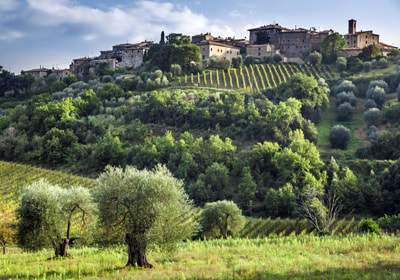
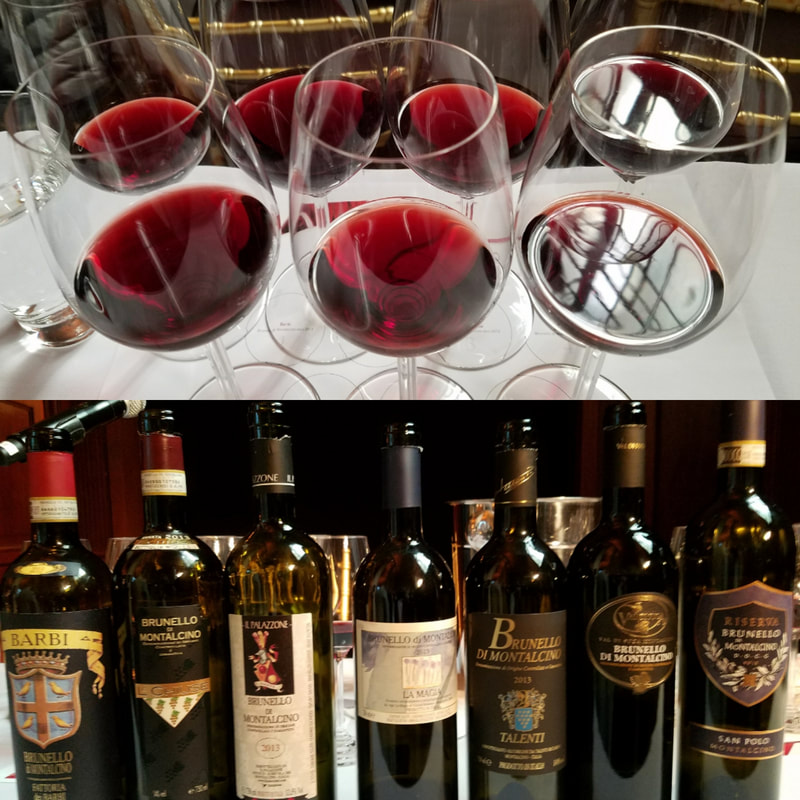
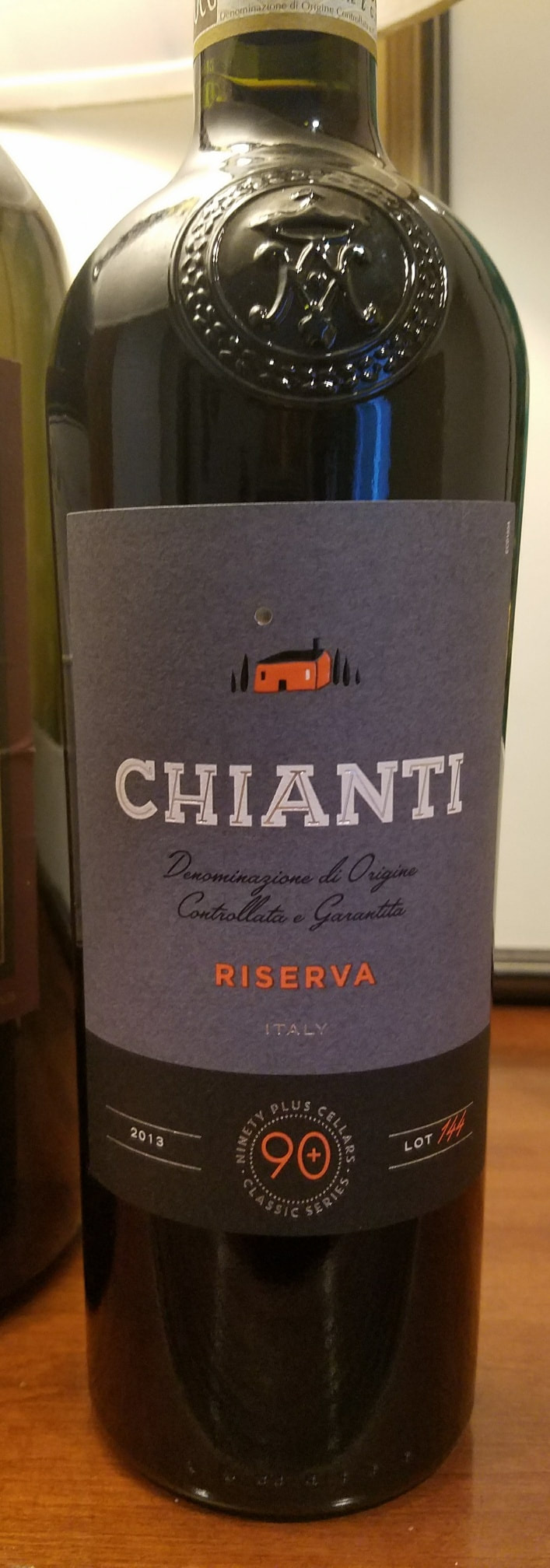
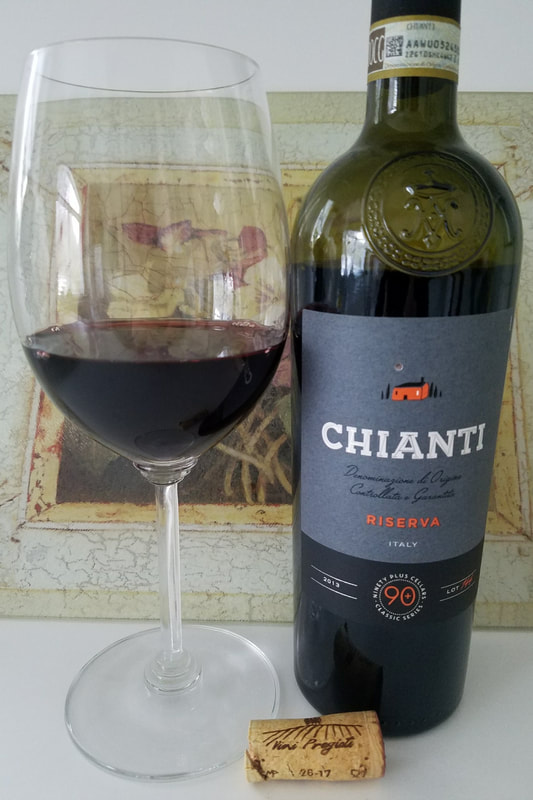
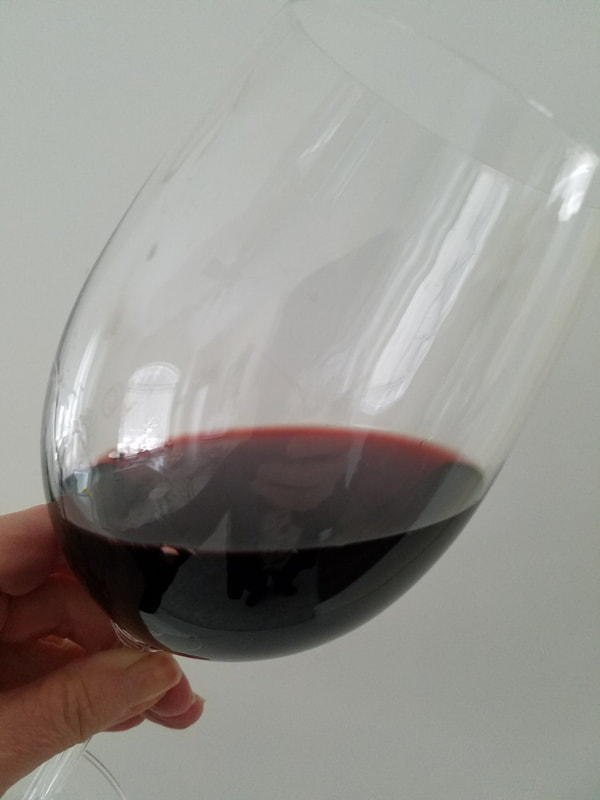
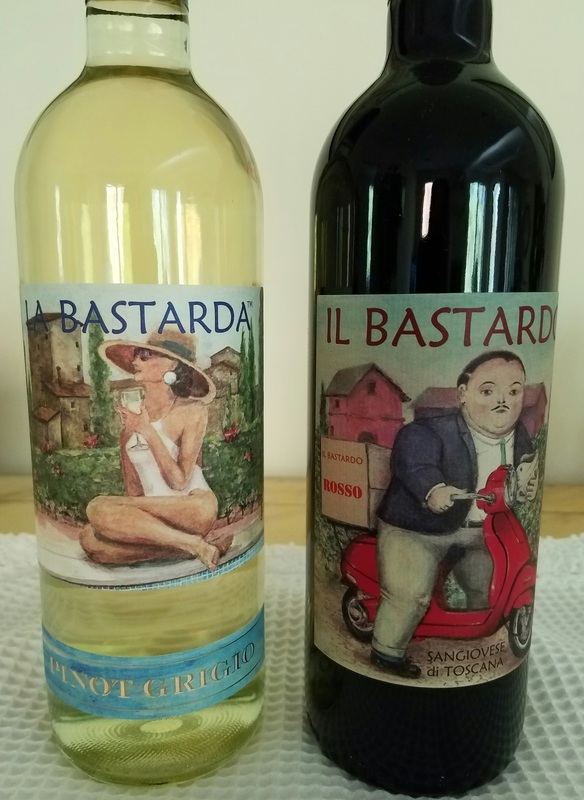
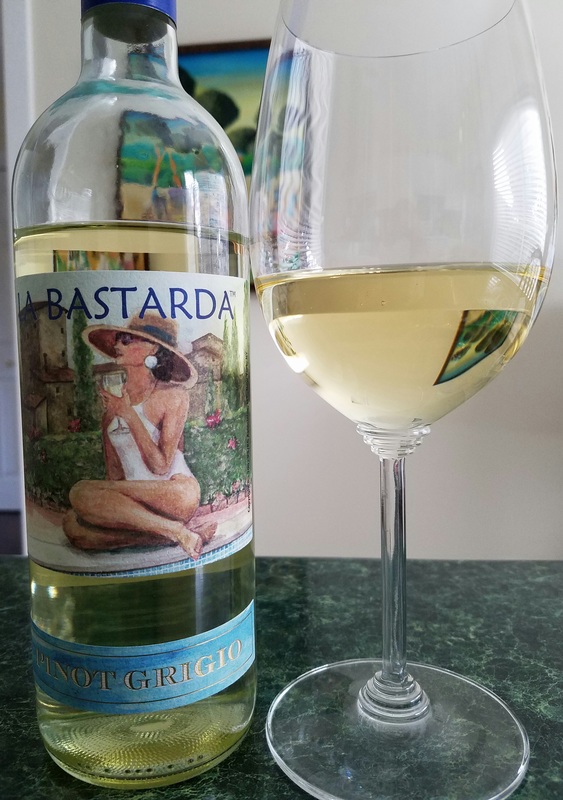
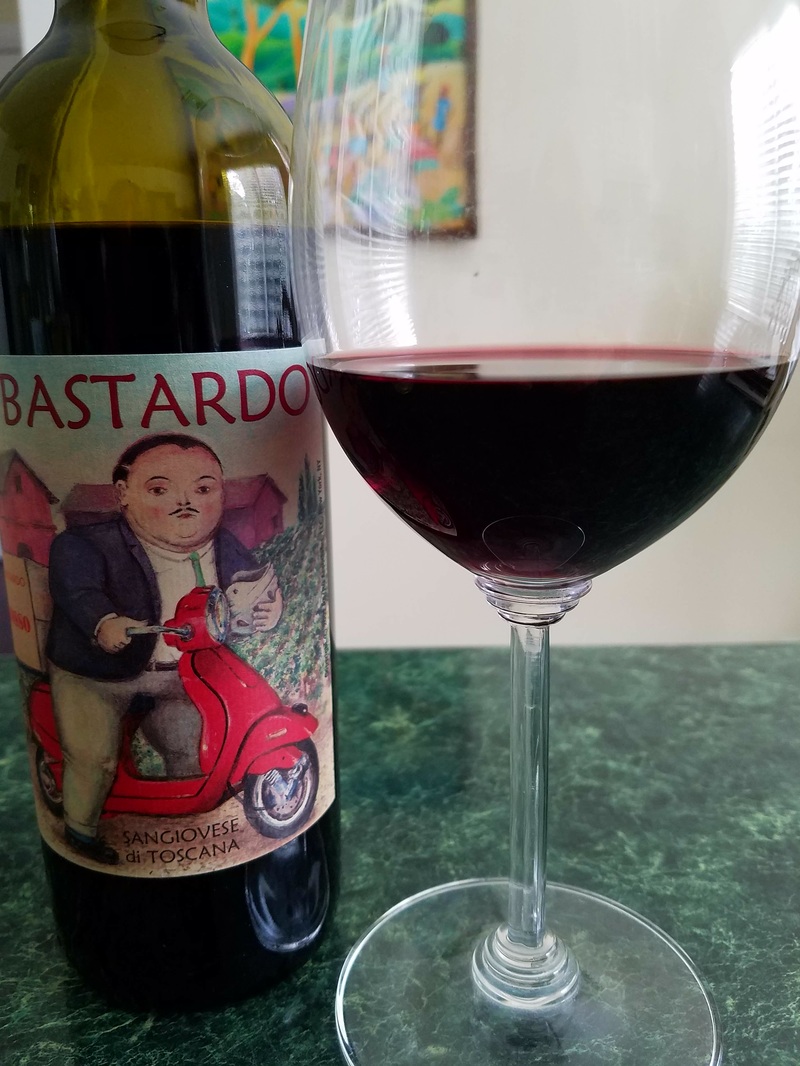
 RSS Feed
RSS Feed